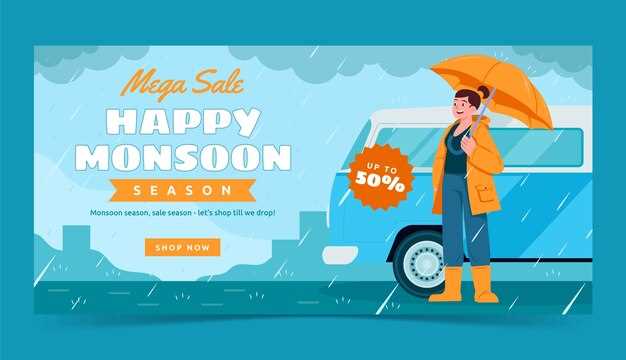
Driving under rainy conditions can be particularly challenging due to the significantly reduced visibility and poor traction that come with such weather. When heavy rain combines with fog, the risks increase even further. In these situations, drivers must be especially cautious to ensure their safety and the safety of others on the road.
The poor weather can lead to hazardous driving conditions, making it essential to adapt your driving habits accordingly. It’s not just about maintaining your vehicle; understanding how to behave in inclement weather plays a crucial role in road safety. Effective strategies can help mitigate risks associated with driving through heavy rain and fog.
In this article, we will explore practical tips and recommendations that will aid drivers in navigating these challenging conditions safely. By applying these guidelines, you can enhance your confidence behind the wheel and reduce the likelihood of accidents during rainy and foggy weather.
Adjusting Your Speed and Following Distance in Adverse Conditions

Driving in rainy conditions significantly impacts road safety due to poor visibility and reduced traction. When encountering heavy rain, it is essential to lower your speed to maintain control over your vehicle. Slowing down allows for quicker reaction times and helps prevent hydroplaning, where tires lose contact with the road surface. Adjusting your speed according to the road conditions ensures a safer driving experience for you and others on the road.
In addition to reducing your speed, it is crucial to increase your following distance. The general rule is to maintain a following distance of at least three to four seconds behind the vehicle in front of you. In poor visibility due to heavy rain or fog, this distance should be extended even further. An increased gap allows for more time to react to sudden stops or changes in traffic conditions, providing additional safety margins in adverse weather.
Remember, during rainy conditions, visibility may be compromised, and other drivers may not react as predictably as they would in clear weather. By adjusting your speed and maintaining a greater following distance, you are enhancing your safety and the safety of those around you. Always prioritize caution over speed to navigate challenging weather efficiently.
Utilizing Headlights and Wipers for Better Visibility
In poor visibility conditions caused by rainy weather, the proper use of headlights becomes essential for safe driving. It is crucial to turn on your headlights, even during the daytime, to ensure that other drivers can see you clearly. Standard low beams are preferable in foggy conditions as high beams can reflect off the moisture in the air, creating additional glare and further reducing visibility.
Beyond using headlights, windshield wipers play a vital role in enhancing your view of the road. Regularly check and maintain your wipers, replacing them if they leave streaks or fail to clear the rain effectively. In heavy rainfall, set your wipers to the appropriate speed to maintain a clear windshield. Utilizing intermittent settings can help manage lighter precipitation effectively without straining the wiper motors.
Combining the effective use of headlights and windshield wipers significantly improves visibility during poor weather. Always adjust your speed according to the conditions, ensuring that you have ample time to react to changing road situations. Following these guidelines will help you navigate safely through challenging weather conditions.
Strategies for Handling Skids and Hydroplaning

Driving in poor weather conditions, such as heavy rain and fog, increases the risk of skids and hydroplaning. Understanding how to manage these situations is crucial for maintaining control over your vehicle.
Recognize the Signs: Be aware of reduced visibility and the potential for road slickness. If you notice your tires losing traction or the sensation of floating, you may be hydroplaning.
Stay Calm: In moments of skidding, it is essential to remain calm. Panicking can lead to overreacting, which can worsen the situation.
Ease Off the Gas: If you begin to skid or hydroplane, gently lift your foot off the accelerator. Sudden acceleration or braking can exacerbate loss of control.
Steer into the Slide: When experiencing a skid, steer in the direction you want the front of your vehicle to go. This can help regain traction and stabilize the vehicle.
Avoid Slamming on the Brakes: Applying brakes abruptly when skidding can cause the tires to lock, increasing the chance of losing control. Instead, apply gentle pressure to the brakes if necessary.
Increase Following Distance: During poor weather conditions, maintain a larger distance from the vehicle ahead. This provides ample time to react if the car in front suddenly slows down or skids.
Use Headlights Wisely: Improve your visibility by using low-beam headlights in fog and heavy rain. High beams can reflect off moisture, reducing visibility further.
Monitor Tire Condition: Ensure your tires have adequate tread depth to reduce the chances of hydroplaning. Well-maintained tires are crucial for handling harsh weather conditions.
By understanding these strategies, drivers can increase their chances of safely navigating through poor weather, minimizing risks associated with skids and hydroplaning.



